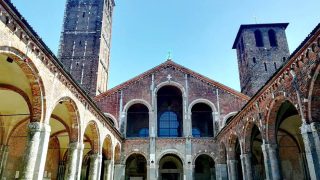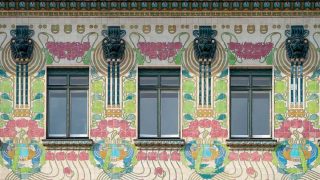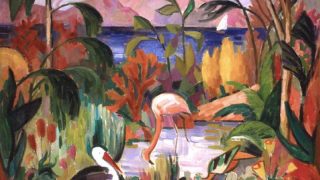The fall of the Western Roman Empire in the year 453 A.D. was one of the most important events in human history. It plunged the western part of Europe into the Dark Ages, and this meant that the architectural landscape didn’t change much for many centuries. The structures constructed by the Romans and the Byzantine …
History
By the end of the 19th century, many ambitious and aspiring Art Nouveau artists thought it was time for something new. That’s why the art movement that emerged at this time in art history is referred to as “Art Nouveau” which translates to “New Art.” This international movement encompassed architecture, and decorative art, and gradually …
When Impressionism emerged in the 1860s, it became an art movement that revolutionized the history of art indefinitely. It sprung from the Realism movement and Impressionist artists never detached from depicting subject matter in a representative way. This all changed in the first years of the 20th century when a group of artists radically changed …
The Impressionist art movement was one of the precursors of modern art, but several artists of the 1870s and 1880s became dissatisfied with it. The natural depiction of light, trivial subject matter and the disjointed compositions of Impressionist paintings were rectified as Post-Impressionist artists emerged in the mid-1880s. What is Post-Impressionist Art? What are some …
One of the most important art movements in the history of art emerged in France in the mid-19th century. Several Impressionist artists broke away from conventional academic art. They were heavily criticized but kept on going and transformed the direction of the art timeline radically in the 1870s and 1880s. The fact that the name …
Trying to represent subject matter in art as truthfully as possible in the visual arts has been done by Realism artists since the Renaissance. This, in turn, had its roots in classical antiquity. Realism art also refers to an art movement that emerged as a reaction to Romantic art in the mid-19th century and which …
The 18th century was marked by a drastic turn from Rococo art to Neoclassical art. These two art movements were opposites as one focused on curving frivolity while the other emphasized geometric harmony. Another art movement emerged in the late 18th century called Romanticism and in this article, we’ll take a closer look at its …
The visual arts of the 18th century took a drastic turn from the frivolity and drama of the Baroque and Rococo eras to the austerity and symmetry of Neoclassical Art. This movement drew inspiration from art produced in classical antiquity. It was eventually replaced by the Romantic art movement which put a high emphasis on …
If there is one art movement that beats all others in terms of exuberance then it’s definitely this 18th-century style that emerged in France. Rococo art followed Baroque art and is sometimes referred to as “Late Baroque.” That’s because Rococo artists built onto the already theatrical Baroque style of the 17th century. The movement didn’t …
The Baroque era started in the early 17th century and flourished in Europe until the mid-18th century. It was an extension of Mannerism, which in turn is considered to be the predecessor of the Renaissance. The main goal of Baroque artists was to create a sense of awe with their art. Because Baroque Art was …










